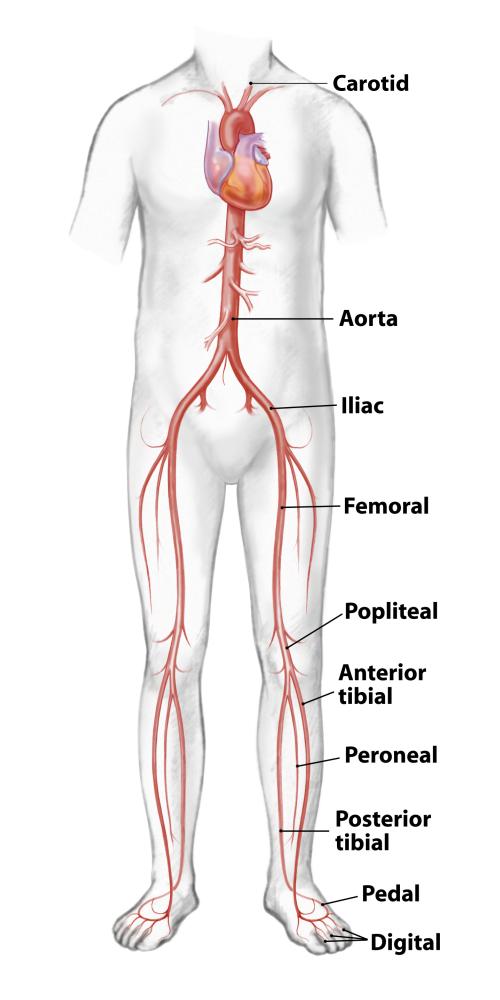

Vascular Anatomy

The arterial system is a series of branching and connecting conduits or tubes, all ultimately originating from the heart, the central pump of the body.
- The major arterial system originates from the heart. The aorta, a huge, elastic pipe about one inch in diameter leads from the top of the heart down through the abdomen.
- The aorta passes through the chest into the abdomen, sending off branches to the lungs, gastro-intestinal tract, and kidneys.
- In the lower abdomen the aorta divides into the iliac arteries, right and left, each about half an inch in diameter.
- These pass via the groin into the legs, where they are then called right and left femoral arteries.
- Each femoral artery passes down the leg and, when it reaches the knee, is called the popliteal artery.
- Below the knee, the popliteal artery divides into three arteries called the anterior and posterior tibial and peroneal arteries.
- When they reach the ankle and foot they are called pedal arteries.
- These finally end in tiny twigs in the toes, called digital arteries.
- Now going towards the brain from the heart are the left and right common carotid arteries located in neck. These branch off to the internal carotid arteries and the external carotid arteries.
- The external carotid arteries supply the face and the internal supply the brain.
- These arteries finally end in the cerebral arteries.
Arteries, much like tree branches, become smaller and smaller as they extend out into the periphery of the body. They are designed to carry oxygen-containing blood and nutrients to all parts of the body and receive blood from the heart under high pressure (average=120 mm of mercury) and deliver it at great speeds throughout the body. The blood, itself, is a complex mixture of oxygen-bearing red cells, as well as plasma containing nutrients and innumerable hormones and other chemicals. When an artery is partially or completely closed, blood and oxygen are not delivered to the tissues in a normal fashion.